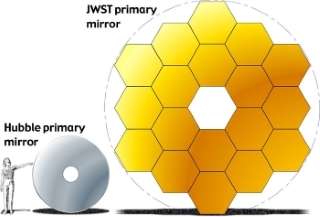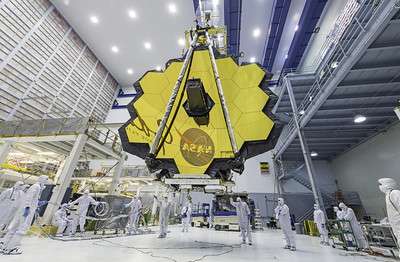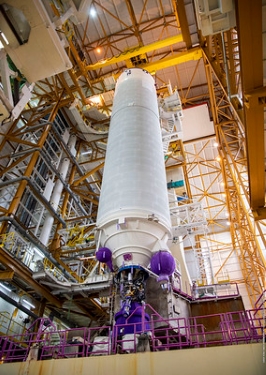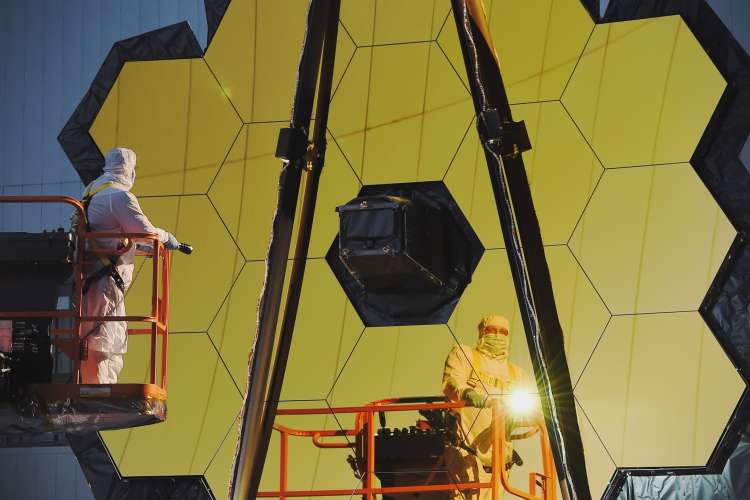Ever since first gazing towards the stars, humans have been curious about the universe – its early formation, its gradual evolution and the potential for life among other planetary systems.
NASA’s James Webb Space Telescope will peer back in time to search for answers. With its longer wavelength coverage and increased sensitivity, Webb could advance humankind’s current knowledge of the universe’s story beyond the capability of any other telescope in history. Besides unveiling new information, the telescope will build upon and complement the discoveries made by its predecessor, the renowned Hubble Space Telescope.
Over its lifetime on the ground, the Webb mission has engaged a team of various space stakeholders. The Aerospace Corporation is proud to have been one of the many contributors towards the Webb mission, offering diverse support throughout.
“One of the real benefits of this program is that it’s tangible; it touches everyone,” said Kevin Bell, Senior Vice President of Aerospace’s Space Systems Group. “There are a lot of people’s lifetimes engaged in this. It’s an incredible chance to inspire the next generation for what’s possible in space.”
The Wonders of Webb
The observatory is scheduled to launch on Dec. 25 onboard an Ariane 5 Launch Vehicle from Arianespace’s ELA-3 launch complex in French Guiana. After liftoff, the telescope will travel 1 million miles to reach its intended orbit around the Sun and undergo multiple phases of deployment, optics checkouts and instrument calibrations over a period of months before conducting science operations.

The Webb mission’s scientific objectives are inspired by Hubble’s observations. While Hubble has mainly viewed the universe through optical and ultraviolet wavelengths, Webb’s infrared ability will help scientists see more of the universe.
“The James Webb Space Telescope’s infrared eyes will be able to peer through the dust and debris to see the heat signature of creation at the planetary, stellar and galactic levels in unprecedented clarity,” said Jeff Hanley, General Manager of Aerospace’s Human Exploration and Spaceflight Division. “The Hubble Space Telescope has re-written the astronomy textbooks of its day, and now Webb – with its infrared sight and much larger aperture to capture heavenly light – will provide the next great leap in understanding the inner workings of the outer universe.”
In addition, Webb’s primary mirror is more than two times larger in diameter than Hubble’s, allowing the observatory to have over six times more collecting area than its predecessor. Webb’s characteristics will make it possible for the telescope to see faint light from distant star-forming regions that are over 13 billion light years away.

“Webb is a huge leap in technology advancement beyond Hubble and the logical successor to that mission,” said Eric Breckheimer, Assistant Principal Director in Aerospace’s Civil Space Programs Operations Division. “I look forward to seeing it in operation as it collects unprecedented images and data on the very earliest years of existence of the universe.”
As the newest eye to the universe, Webb will enlighten both scientists and the public with the insights it gathers from each target it studies.
“Webb will be able to observe from our solar system to the most distant observable galaxies in the early universe, and everything in between,” said Uma Bruegman, Principal Director in Aerospace’s Strategic Assessments and Studies Division. “It will help us understand the origins of the universe and what it looked like millions of years ago.”
Longevity of Aerospace’s Support

Perhaps Webb’s most recognizable and iconic features are the 18 gold-coated mirror segments that resemble a honeycomb when fully unfolded. Each hexagonal segment weighs approximately 46 pounds, light and durable in comparison to Hubble’s mirror. Designing lighter mirror technology hearkens back to earlier conversations among Aerospace’s customers that ultimately fueled the creation of the Webb mission.
“In the late 1990s, there was a multi-organizational need for significantly lighter-weight optical mirrors,” said Dr. Eric Hall, General Manager in Aerospace’s Vehicle Systems Division. “Defense and intelligence organizations and NASA came together to create the Advanced Mirror System Demonstrator program. Aerospace had a key part in this program—directly supporting our defense customers and indirectly helping all of the organizations.”
Because a mirror of this size has never been in space before, Webb’s development faced certain challenges. Identifying locations that could test an observatory of this size safely and in the right environment was crucial, and Aerospace lent its technical expertise to this matter.
“Over a decade ago, there was an assessment done on facilities that could be suitable for thermal vacuum testing of the telescope,” said Dr. Rajiv Kohli, Senior Project Leader in Aerospace’s Human Exploration and Spaceflight Division. “NASA Johnson Space Center’s Chamber A, 45 feet in diameter and 60 feet high, was ultimately selected to accommodate the telescope. Since the chamber had been primarily designed for Apollo-related testing, it had to be refurbished to meet Webb’s certain spec requirements.”

The large surface areas of the mirrors also heightened the importance of contamination control. Kohli provided ongoing cleanliness maintenance support for the chamber and reported data to the Webb program on a regular basis to confirm that the contamination levels were within acceptable ranges. These practices helped ensure the telescope’s health—from the mirrors to the actuators—and prevented risks that could have affected the quality of Webb’s data and operations.
Throughout the years, Aerospace aided technical reviews and analyses for Webb—ranging from assessing the mission status to providing hands-on evaluation of select hardware. For example, in the late 2000s, Aerospace personnel conducted various analyses on the Mid-Infrared Instrument’s (MIRI) electronic boards to assess structural adequacy of the assemblies to withstand the conditions of space. While in operation, MIRI will see the redshifted light of far astronomical objects and build upon humans’ current image of the universe.
Adding to the Universe’s Story

When Webb lifts off from the ELA-3 launch complex, it will serve as another testament to the motivation of human curiosity, the power of long-term collaboration and the next step in space science.
“The James Webb Space Telescope is this generation’s Hubble and will be its eye to the sky, inspiring generations to come,” said Martha Hess, Principal Director of Aerospace’s Human Exploration and Spaceflight Division. “Most people can remember seeing their first image from Hubble, so it will be exciting to see the new lens Webb uses to view the universe.”
Although Webb’s findings will work in tandem with preceding and contemporary spacecraft, the telescope’s observations will inspire future questions and shape the astronomical community.
“Pushing the envelope of science even one step further is how we got to the James Webb Space Telescope,” said Aerospace Senior Project Engineer Kenneth Harris II, who led a NASA team responsible for integrating the telescope’s main payload prior to joining Aerospace. “Webb will present us with additional questions that will spark the curiosity of scientists, engineers, and future generations. I’m interested to see how Webb will kick off the future of science and where we decide to travel and point our resources next.”
Aerospace congratulates the Webb mission partners, which includes integrated teams across NASA, ESA, CSA and many others on this cutting-edge technological accomplishment and looks forward to continuing supporting customers and provide solutions for the space enterprise.

